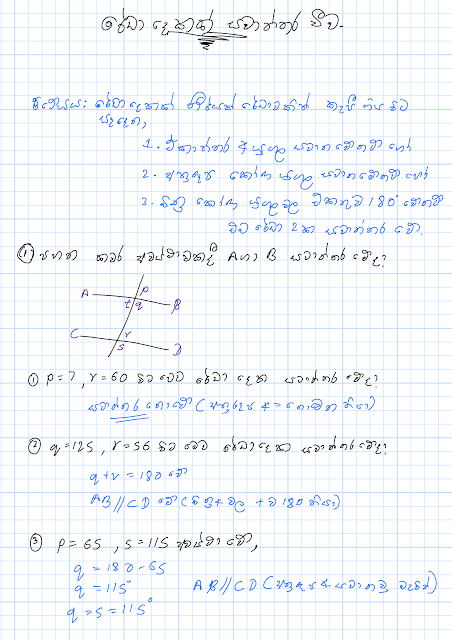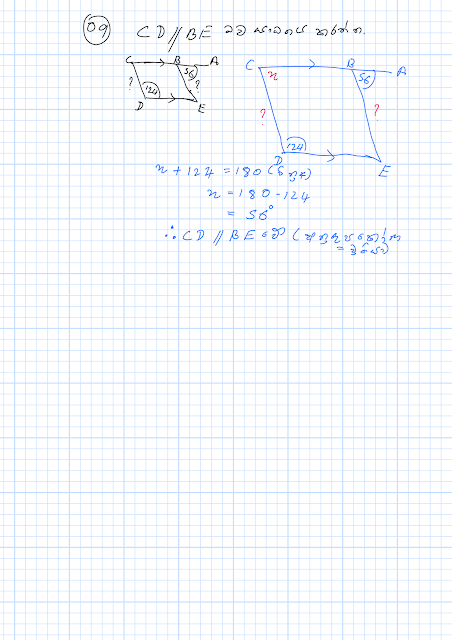ත්රිකෝණ අංගසාම්යය (Congruence of Triangles)
ත්රිකෝණ අංගසාම්යය යනු ජ්යාමිතියේ මූලික සංකල්පයක් වන අතර, ත්රිකෝණ දෙකක් හැඩයෙන් සහ ප්රමාණයෙන් හරියටම සමාන වන විට ඒවා අංගසාම්යය වේ යන්නයි. සරලව කිවහොත්, එක් ත්රිකෝණයක් අනෙක මතින් නියතව පිහිටුවිය හැකි නම්, ඒවා අංගසාම්යය වේ. අංගසාම්ය ත්රිකෝණවල අනුරූප පාදවල දිග සමාන වන අතර, අනුරූප කෝණවල විශාලත්වයද සමාන වේ. ත්රිකෝණ දෙකක් අංගසාම්යය දැයි තීරණය කිරීම සඳහා විවිධ ප්රමේයයන් (සාධක) ඇත:
- පා.කෝ.පා. (SAS - Side-Angle-Side): ත්රිකෝණයක පාද දෙකක් සහ ඒවා අතර අන්තර්ගත කෝණය තවත් ත්රිකෝණයක අනුරූප පාද දෙකකට සහ අන්තර්ගත කෝණයට සමාන නම්.
- පා.පා.පා. (SSS - Side-Side-Side): ත්රිකෝණයක පාද තුනේම දිග තවත් ත්රිකෝණයක අනුරූප පාද තුනේම දිගට සමාන නම්.
- කෝ.කෝ.පා. (AAS - Angle-Angle-Side): ත්රිකෝණයක කෝණ දෙකක් සහ අන්තර්ගත නොවන පාදයක් තවත් ත්රිකෝණයක අනුරූප කෝණ දෙකට සහ අන්තර්ගත නොවන පාදයට සමාන නම්.
- කර්.පා. (RHS - Right-angle, Hypotenuse, Side): සෘජුකෝණී ත්රිකෝණ දෙකක කර්ණය සහ එක් පාදයක් සමාන නම්.
















































